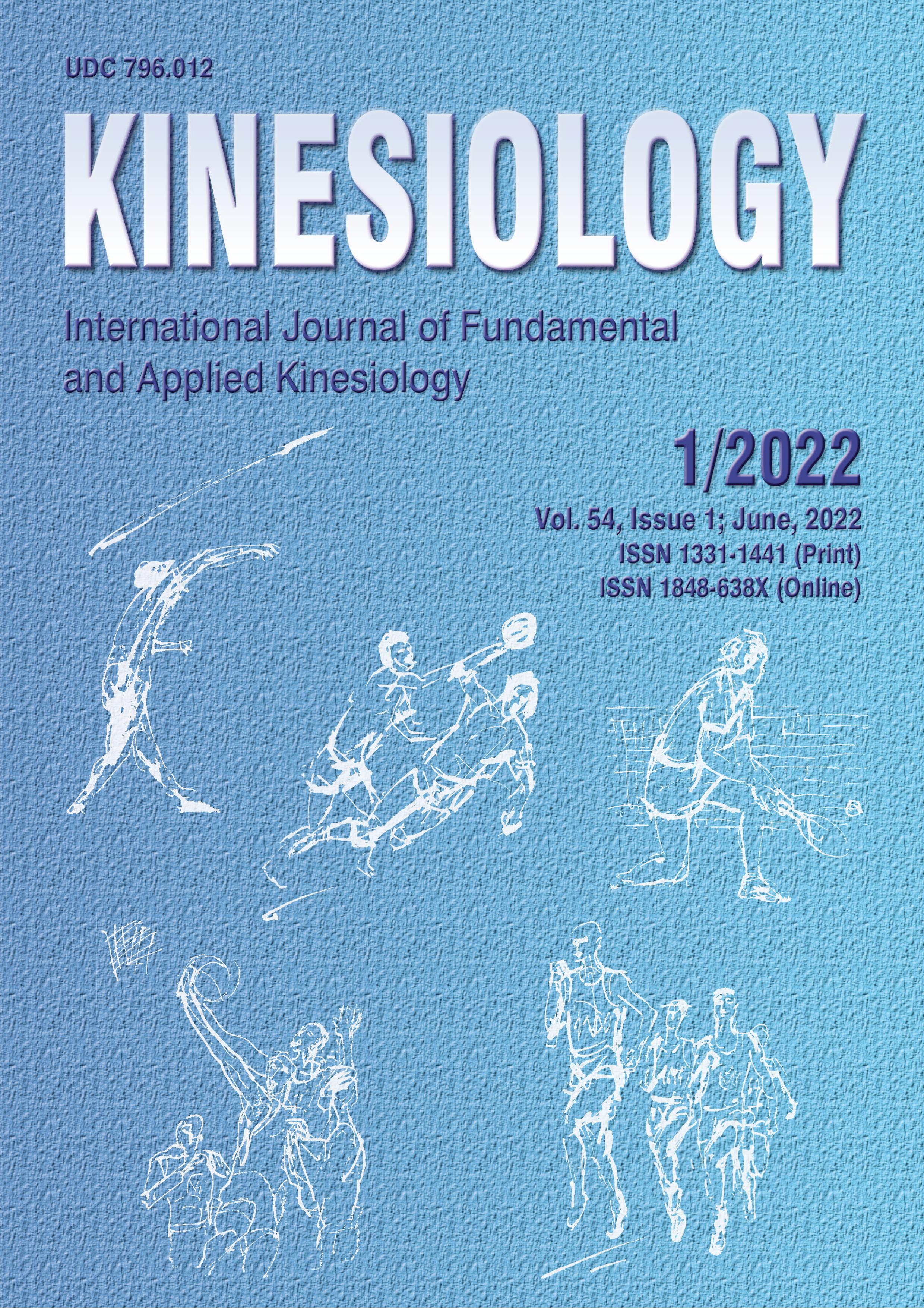TRAINING AND FITNESS VARIABILITY IN ELITE YOUTH SOCCER: PERSPECTIVES FROM A DIFFICULTY PREDICTION MODEL
Abstract
Research within sport science disciplines seeks to enhance performance via the combination of factors that influences the team’s periodization. The current study aimed to investigate the variations in training load (TL), and the consequential changes in fitness variables, based on the use of match difficulty prediction model (MDP), level of opposition (LOP), days between matches, and match location during 12 weeks in the competitive period I. Seventeen elite soccer players (age = 17.57 ± 0.49 years; body height 1.79 ± 0.05 m; body weight 72.21 ± 6.96 kg), have completed a Yo-Yo intermittent recovery test, a running-based anaerobic sprint test, a soccer-specific repeated sprint ability, and a vertical jump test to identify changes in players fitness. TL was determined by multiplying the RPE of the session by its duration in minutes (s-RPE). Training monotony, strain, and acute:chronic workload ratio (ACWR) were also assessed. A simple regression model was conducted and the highest variances explained (R2) were used. The LOP score explained most of the variance in ACWR (r= 0.606, R2=0.37). TL declined significantly when compared the match-day by the first three days and the last three days of the week. No significant difference was found in s-RPE between the high and low MDP factor. Strong negative correlations were reported between ACWR and LOP (r=-0.714, p<.01). In addition, we found a significant improvement in repeated sprint ability, aerobic and anaerobic fitness variables between pre- and post-test in fatigue index (d=1.104), best testing time, ideal time, total time and mean-best (d=0.518-0.550), and aerobic and anaerobic fitness variables (p<.05), respectively. The MDP could facilitate the training prescription as well as the distribution of training intensities with high specificity, providing a long-term youth player’s development and allowing teams to maintain optimal fitness leading into more difficult matches.
Key words: prediction match difficulty, training loads, periodization, football
Downloads
Published
How to Cite
Issue
Section
License

This work is licensed under a Creative Commons Attribution-NonCommercial 4.0 International License.
At Faculty of Kinesiology we recognize that access to quality research is vital to the scientific community and beyond. Kinesiology is non-profit journal and all costs of publishing and peer review process are covered by the publisher itself or other funding sources like Ministry of Science and Education of the Republic of Croatia. Full text papers are also available free of charge at http://hrcak.srce.hr/kineziologija. There are no restrictions on self archiving of any form of paper (preprint, postprint and publisher's version).
Articles are distributed under the terms of the CC BY - NC 4.0
Kinesiology does not charge any fees to authors to submit or publish articles in our journal.


